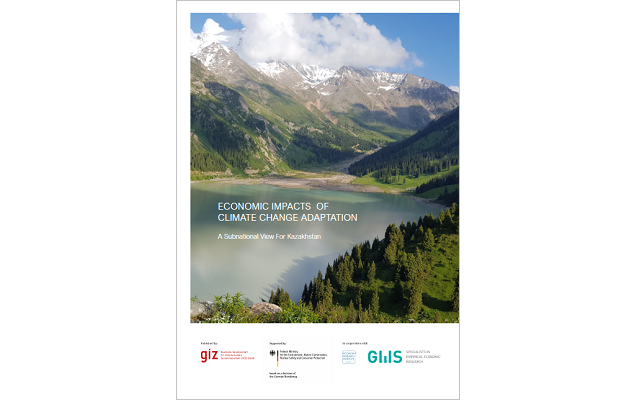Economic Impacts of Climate Change Adaptation.
Großmann, A. & Hohmann, F. (2023): Economic Impacts of Climate Change Adaptation. A Subnational View for Kazakhstan, Berlin.Abstract
Climate change poses major challenges for Kazakhstan. The north of Kazakhstan is mainly affected by droughts, while the south must cope with floods.
Although the damage is mainly regional or even local, the economic impact is not only local but can also be felt beyond the region due to the economic ties between the regions of Kazakhstan. Likewise, adaptation measures show economic implications not only in the region implementing such measures. Due to regional economic specialization, positive effects are also visible in other regions not directly affected.
A better understanding of the subnational effects of climate change and adaptation action is key to promote effective adaptation planning at the regional level. Therefore, the CRED project supported the extension of the national, macroeconomic model e3.kz to explicitly assess economic effects at the subnational level. Additionally, past damages from extreme weather events (EWE) were collected in an Excel file categorized by regions, EWE, year, and type of damage as well as the affected sector. For a more intuitive access, interactive maps were created allowing for a quick overview of past climate hazards and their quantified damages.
The following questions can be answered with the extended modelling approach:
- Which Kazakh regions (“oblast”) suffer the most from climate change in terms of e.g., GDP and employment by economic sectors?
- Which Kazakh regions benefit the most from adaptation measures in terms of e.g., GDP and employment by economic sectors?
In addition to the results from the climate change adaptation scenarios at national level the subnational analyses show that:
- All regions in Kazakhstan are directly and/or indirectly affected from the impacts of climate change and adaptation.
- From a regional perspective, climate damages are even more significant than at national level.
- In particular those regions suffer/benefit from the sectoral impacts at national level for which the respective economic sector(s) is (are) key.
- Regions that have a significant sector-specific focus are exposed to a higher economic risk if climate change negatively affects that economic sector. Then, adaptation to climate change is in particular relevant for the region. Diversification of the economic structure may support to reduce this risk.
- Regions with a focus on economic sectors that profit from climate change adaptation such as construction and “green” industries, which e.g., support deployment of renewable energy, profit the most from climate-resilient strategies.
- Shocks affecting agriculture are of concern in particular for North Kazakhstan, Akmola, and Jambyl region. More or less all regions are affected from shocks impacting trade & transport as well as service sectors.

